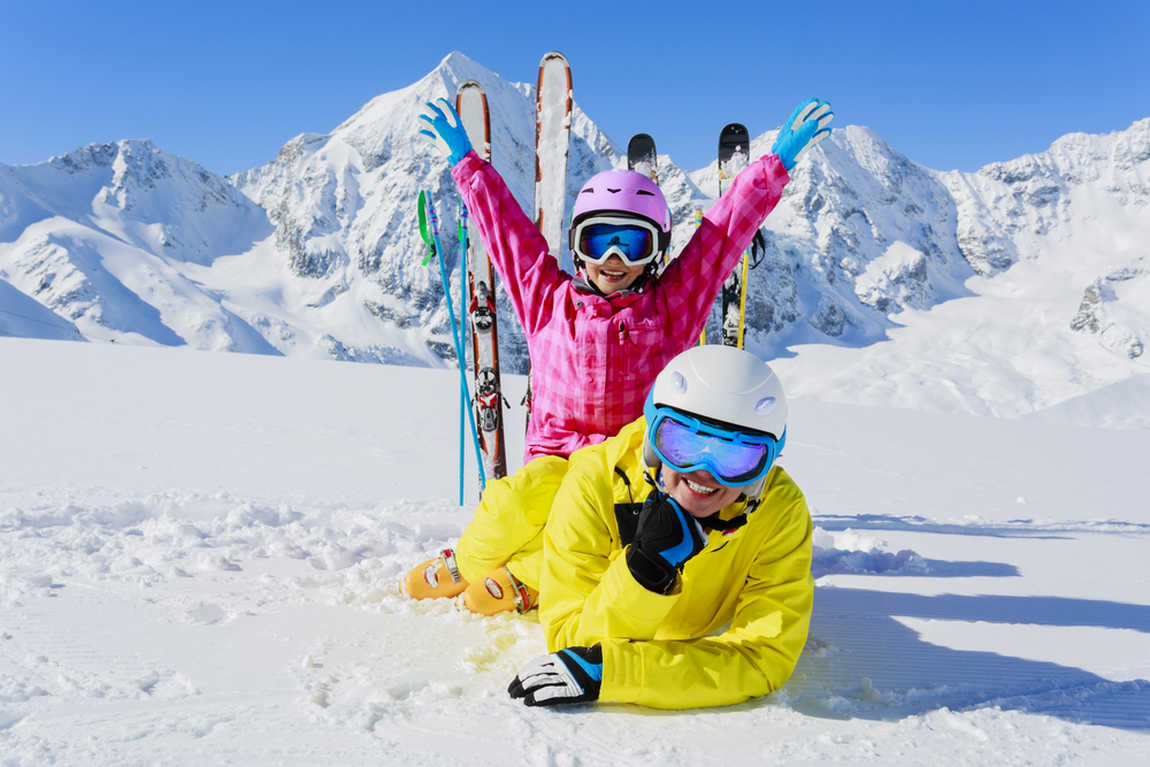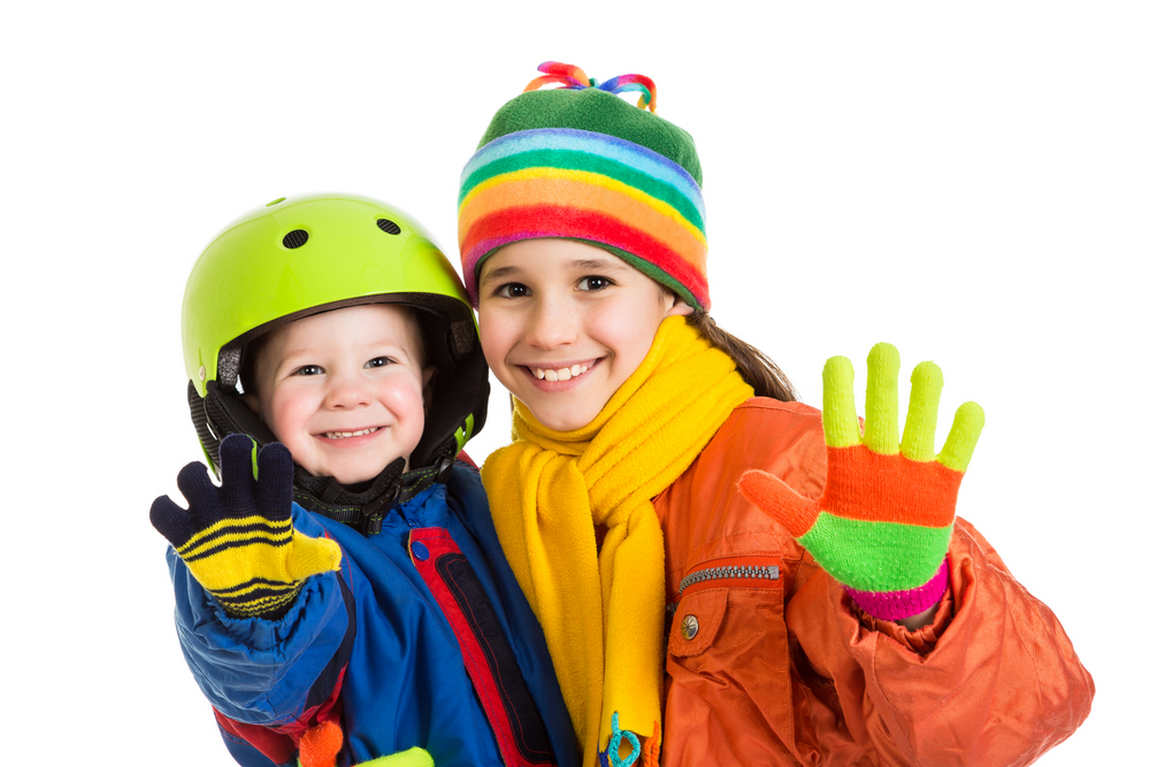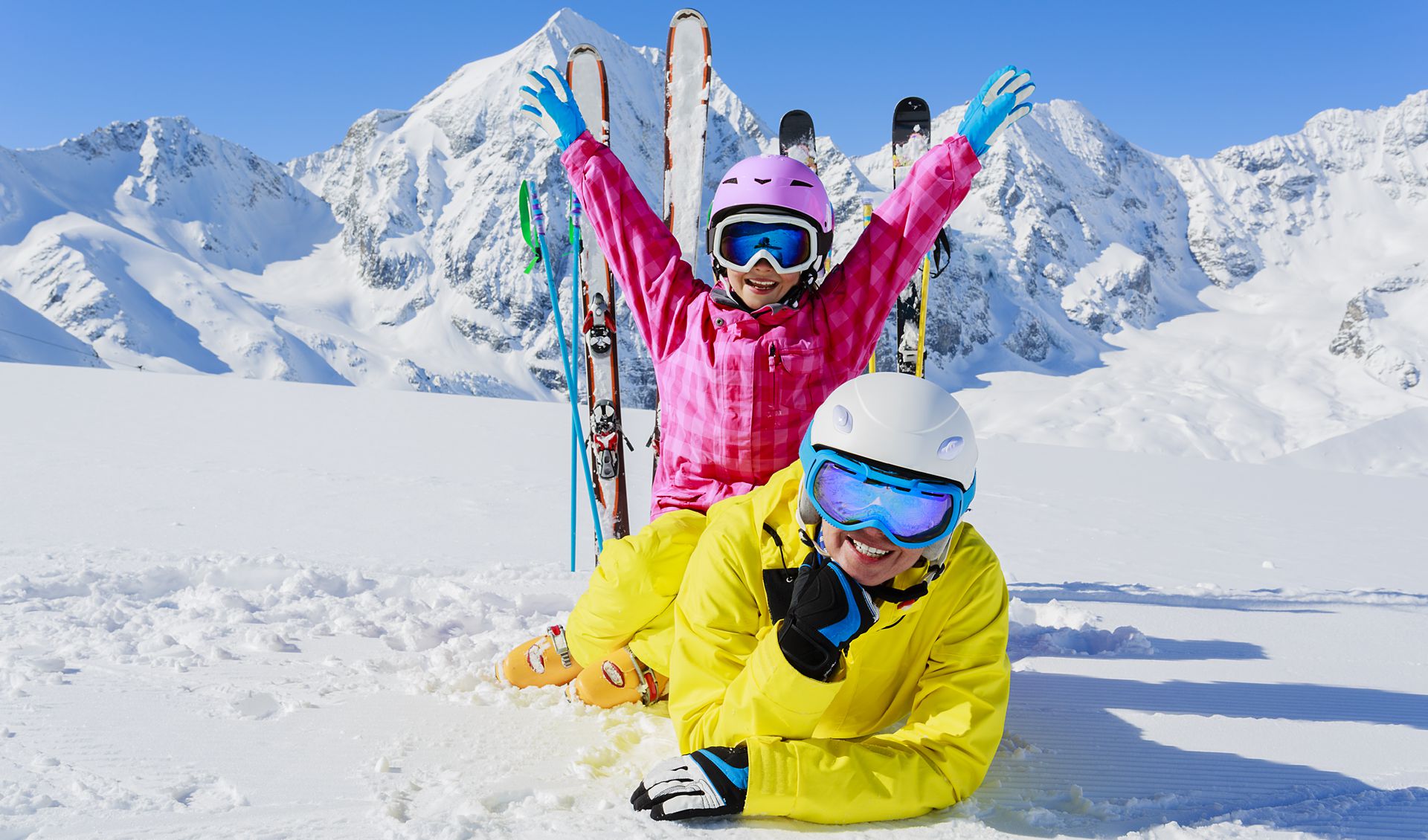Parents who enjoy outdoor activities try to encourage their children to do the same. That is why ski resorts have become excellent places for winter holidays with children. Ski school instructors are great at getting kids on skis.
But when choosing the right equipment, they have to do it themselves. This guide'll tell you what a young skier needs for their first lesson.

Clothing for the skier
Trousers and jackets your child wears for sledging in the park are unsuitable for downhill skiing. Clothing for ski school lessons should meet several requirements: light, not restricting freedom of movement; waterproof and windproof; warm, but not overheating (breathable).
In addition, good ski equipment has sealed elbows and knees and can cushion falls and slow slips.
There are two types of children's ski suits: snowsuits or salopettes (trousers designed for snowsports typically have a high waist and a bib that braces can be attached to).
The only difference is that salopettes are easier to handle when your child needs to go to the toilet. You don't have to worry about snow piling up under a ski jacket: it has a unique 'skirt' that fits snugly around the hips.
The jacket has another advantage: it can be removed if it gets too hot. The disadvantage of overalls is that children grow out of them more quickly.
The ski shop will help you choose the correct size. Letting a child put on and take off your ski jacket is advisable — it should be easy to open and close all the zips (the zip can also be opened with gloves, choose a jacket with a large tongue).
Three layers of clothing are usually enough for the slopes. The bottom layer is thermal underwear, which will wick away excess moisture but will not get wet. You can also buy thermal socks. The second layer is a sweater or fleece jacket. The third layer is a ski suit.
A hat and gloves are essential. Mittens for young skiers should be attached to the sleeves (ski jackets often have loops for attaching gloves). Since falls are inevitable, it is good if the mittens or gloves have a PU-reinforced and waterproof "palm". A hat should fit snugly over the head.
Shoes for the skier
Your child should be prepared to spend a long time trying on shoes, 5-10 minutes for each pair. It will allow you to see if the boot size fits the length and width of the foot and if the ankle is well secured.
A ski boot may feel uncomfortable but should not be too tight or chafing. You should only be able to see how the boot fits when it is fully fastened. Beginners do not need a professional stiffener — their first boots can be soft or medium stiff.
A helpful feature is thermoforming, which is the ability of the boot to take the shape of the skier's foot when heated. A thermoformed ski boot adapts to the skier's body heat as they ski.
Heated insoles can help. No matter how hard you ski, your feet get the coldest.
Important: It is not advisable to buy boots that are too big or that you have not tried on. Skiing in the wrong size boots is no fun.
Safety
Children learning to ski should wear a helmet. It protects your child's head during a fall and provides extra warmth. Many ski schools only accept children with helmets.

The ski goggles or mask protect your child's eyes from the blinding sun, wind and snow. They have a secure fit that can be adjusted to fit any head size.
Important: Goggles must protect your eyes from bright light (have yellow or pink lenses) and provide high UV protection. Try them on your helmet.
Although we're not used to sunbathing when there's snow, the sun is very clingy in the mountains. You should protect exposed parts of your body from UV rays. To do this, use a cream with a UV filter like the ones you use in the summer.
Skis and poles
It's difficult to predict whether your child will enjoy skiing, so it's best to rent equipment first, available at all resorts. But if you buy everything you need, a few rules when choosing skis and poles are worth knowing.
Skis. Modern skis are made of plastic — a lightweight, slippery material. To prevent excessive slipping, plastic skis must have a non-slip base. Wooden skis are also available — they offer good skiing but require more care.
Buying professional skis immediately is unnecessary, but you should not buy the easiest ones. Children learn the basics quickly and want to build up skating speed; more than cheap models will be needed. Choose the length of the ski according to your child's weight:
- Weights up to 20 kg — 70-80 cm;
- 20-30 kg — 90 cm;
- 30-40 kg — 100 cm.
Skis should be adjusted for height for children weighing more than 40 kg: the good ski should reach the child's nose (beginners can choose a slightly shorter ski).
Classic or all-purpose skis are suitable for the first few lessons. Later on, as you develop your skiing style, you may need skate skis.
You should buy semi-rigid bindings for your skis — these will keep your shoes securely in place and can be used with both ski boots and everyday shoes.
Ski poles. Ski school instructors recommend starting without poles — it's easier for beginners to learn to keep their balance. However, you will need poles later on.
Their length should be adjusted so the child can hold the handles at a right angle to the elbow when skiing. Children's poles should have rubber grips with a wrist loop, a tip that is not too sharp and good support.
This article will help your well-equipped child feel more confident on the slopes and soon help them conquer their first slopes. And if you still need to decide where to go for your winter holiday, it's time to check out our collection of family-friendly resorts.





